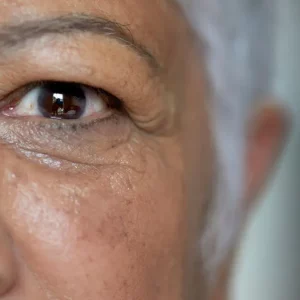Some brain injuries, particularly those that affect the parietal lobe, can lead to various sensory deficits. Some examples of these problems include numbness, tingling, and difficulty distinguishing between hot and cold sensations.
Fortunately, it is possible to treat these problems through sensory stimulation activities. These activities can help retrain your brain to process different sensations again.
In today’s article, you’ll learn why sensation can be impaired after brain injury plus some of the best sensory stimulation activities for TBI patients. Let’s dive in.
Causes of Sensory Impairment After TBI
Sensory impairment typically occurs after damage to the parietal lobe. Specifically, it is associated with lesions to the somatosensory cortex.
The somatosensory cortex is in charge of processing all of the sensations that you feel on your body. Signals from various types of sensations are sent to your brain from receptors found throughout the body that detect:
- Pain
- Touch
- Temperature
- Weight
When your receptors detect one of these sensations, they relay that information to the thalamus, known as a relay station of the brain. The thalamus then passes that on to the somatosensory cortex.
There are four areas of the sensory cortex. Each is arranged so that a particular area receives information from a certain part of the body.
Areas of the body that are more sensitive, such as the hands and lips, take up more space in the cortex than others. Therefore, those areas are more likely to experience sensory problems after a traumatic brain injury (TBI).
Sensory Stimulation Activities for TBI Patients
As with most secondary effects after brain injury, sensory integration problems can be treated through neuroplasticity and rehabilitation. Neuroplasticity is one way that the brain recovers from injury and uses existing, healthy neural pathways to overcome sensory loss.
The best types of activities to help you accomplish this are sensory stimulation and reintegration activities, also known as sensory reeducation exercises.
Sensory reeducation is a form of cognitive therapy. It’s an effective method used by therapists to help patients process sensation again.
The following are a few of the best sensory stimulation activities for TBI patients. Repeat each exercise at least 10 times and try to practice for about 15 minutes every day. The more consistently you practice, the faster you can make progress:
1. Texture Handling

Place objects with different textures such as Velcro, cotton, sandpaper, and silverware on a table in front of you.
Then, pick up each object and look at it. Does the sandpaper feel rough or smooth? Once you have felt each object, put them back on the table.
Next, do the same thing, but this time close your eyes and try to sort the various textures without looking at them. This activity works on sensory reintegration, which allows your brain to identify a texture without necessarily seeing it.
Finally, if these exercises are too easy, fill a bowl with rice or sand, and have a friend hide marbles or coins inside the bowl. Then, with your eyes closed, try to find each object with your hand.
This exercise will challenge you to distinguish between the rice surrounding your hand and the smooth surface of a marble.
2. Sensory Locating

First, have a friend touch different areas on your hand, arms, and legs while your eyes are open. Watch where they touch you as you try to remember what that feels like.
Now, repeat the same exercise with your eyes closed. When your friend touches a specific point on your leg, try to mimic the same location on the other side.
If you get it wrong, have the friend shift your hand to the correct spot. This helps your brain to recognize where you felt the sensation.
3. Temperature Differentiation
This sensory stimulation activity for TBI patients is designed to help your brain relearn the sensation of “hot” and “cold.”
Soak one cloth in cold water and another one in hot water. Have someone place the cold cloth on your arm while you close your eyes. Then, have them switch to the warm cloth.
See if you can feel a difference between the hot and cold cloths. Alternate back and forth between hot and cold 10 times.
4. Proprioceptive Training

Sometimes, a brain injury can impair your proprioceptive sense. This refers to the ability to detect movement in your arms and legs are without looking at them.
Fortunately, sensory stimulation activities can also help you improve your proprioception.
One effective exercise is to close your eyes and have another person move your arm or leg. Your task is to state the direction in which the body part is moved. For example, after they move it, you would tell the person “my arm is above my head.”
Finally, open your eyes to see if you were correct. If you were not, try to remember what that movement felt like, as this will help retrain your brain. Repeat ten times.
5. Pressure and Grip Training
Finally, this exercise can help you regain the ability to apply the correct pressure when picking up an object.
Fill a paper cup halfway with water. Try to pick up the cup without spilling it and without accidentally crushing it. You can use your vision to tell how much pressure to apply.
For example, if you see the cup slipping out of your hands, increase your grip. If the cup looks like it is being squeezed too hard, loosen your grip. Try to bring the cup all the way up to your mouth.
Next, repeat this exercise, but this time move the cup from one side of the table to the other without dropping it. Repeat ten times.
Using a Sensory Diet

Besides numbness, damage to the somatosensory cortex can also cause hypersensitivity. Doctors sometimes refer to this condition as sensory defensiveness.
With sensory defensiveness, the brain is in a heightened state of arousal and cannot process sensory information properly. As a result, even mild sensations can feel too intense for the person and they can easily become overwhelmed.
The best way to treat this issue is with a sensory diet. This refers to a routine created by you and your doctor that helps you receive beneficial sensory input throughout the day. The goal is to slowly increase your tolerance to stimulation.
Some examples of sensory diet routines include:
- Using weighted blankets
- Letting warm water flow over your hands
- Chewing gum
- Drinking thick liquid
- Eating crunchy foods
- Chores that involve the whole body, such as vacuuming
- Deep breathing
Another activity you can do on a sensory diet is the Wilbarger Deep Pressure and Proprioceptive Technique. It involves a series of brushing and joint compressions every two hours for at least two weeks.
You should not do these activities all at once; instead, spread them out throughout the day to give your brain a chance to rest. But the more you expose yourself to gentle stimulus like this, the better your brain will get at processing it.
Treating Sensory Impairment with Sensory Stimulation
Sensory impairments occur after injuries to the parietal lobe. They can cause a variety of problems, including numbness, tingling, and hypersensitivity.
But thanks to the brain’s natural neuroplasticity, you can still retrain your brain to process your senses correctly again.
We hope these activities help you recover full sensation after TBI.










